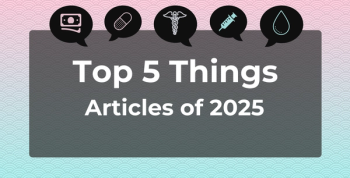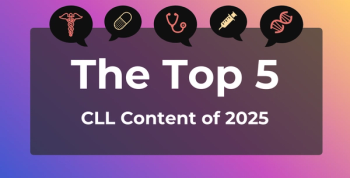
IEHP CEO Weighs in: Who Pays the Price When Millions Lose Medicaid Coverage?

Explore the critical implications of proposed Medicaid cuts on health care access, costs, and community well-being in the US.
The ongoing debate surrounding health care financing in the US has reached a critical point, with millions of people expected to lose Medicaid coverage under a new bill.1 This interview with Jarrod B. McNaughton, MBA, FACHE, the CEO of Inland Empire Health Plan (IEHP), explores the far-reaching consequences of this change for The American Journal of Managed Care® (AJMC®).
As the executive leader for one of the 10 largest Medicaid health plans and the largest not-for-profit Medicare-Medicaid public health plan in the US, McNaughton works with his Governing Board and a network of providers, hospitals, and community partners to deliver quality whole-person care to more than 1.5 million members.
McNaughton argues that the US health care system is like a fragile Jenga puzzle where removing a single piece—Medicaid—threatens the entire structure. Beyond the immediate loss of a crucial lifeline for children, seniors, and those with disabilities, we examine the ripple effects across the health care landscape, from the rising costs of treating chronic illnesses and the strain on hospitals to the very real risk of closures for rural safety-net providers.
AJMC: Millions of people are expected to lose Medicaid coverage under the new bill. Beyond the immediate loss of coverage, what ripple effects do you anticipate across the health care system?
McNaughton: Our health care financing system in the US is like a Jenga puzzle, pieced together so fragile that if you remove one part of it, the entire structure begins to get shaky.
Medicaid is an essential lifeline for children, families, seniors, pregnant women, and those living with disabilities. Cuts to these services or financing structures will have devastating consequences not only for the Inland Empire’s entire health care and economy but also across the nation, with people paying more out-of-pocket for services.
Members who lose coverage that requires ongoing care for illnesses, such as diabetes, asthma, and heart disease, will be unable to manage their condition through preventive activities and run the risk of exacerbating their illness.
The downstream costs of neglecting preventive care place a heavy burden on individuals, employers, and the entire health care system. Should cuts move forward as planned, we could see:
- Higher costs for treating chronic illness: While preventive services often have a low or no cost to the patient, treating advanced chronic diseases is extremely expensive
- Reduced productivity and economic output: Health problems lead to increased absenteeism and missed workdays, resulting in significant productivity losses for businesses and the broader economy
- Strain on the health care system: The loss of coverage and high volume of preventable but advanced-stage illnesses strains hospital resources, emergency rooms, and health care providers.
In fact, the California Hospital Association estimates that California hospitals will lose between $66 billion and $128 billion in revenue over the next decade.
Leaders in health care, social services, and public government need to work together to ensure Medicaid members understand there will be new eligibility, work hours, and community service reporting requirements, additional redetermination processes, and other administrative activities they will need to work with Medicaid eligibility departments to remain covered and prevent lapses in critical and preventive care.
Rural hospitals and clinics often depend on Medicaid reimbursements to stay operational. How significant is the risk of closures or reduced services in these communities?
Hospitals in our region already serve a high number of Medi-Cal patients and are among the largest employers in their communities. Cuts to funding could bring a reduction in services, eliminate critical programs, or cause layoffs—especially in rural areas where access is already limited. The Inland Empire and other areas in the country are seeing rural hospitals on the brink of closure, threatening entire communities where the closest health care services are over an hour away and hospitals are primary employers for the community.
If safety-net providers lose funding streams, how might this affect access to care not only for Medicaid patients but for commercially insured patients as well?
Providers, such as doctors and hospitals, will be impacted by policy changes to provider taxes and state-directed payments. Cuts will raise the overall costs of health care for the insured, as providers will pass along financial impacts to their patients.
Safety-net hospitals could be disproportionately impacted, and it has been reported that their operating margins could fall by an average of 25.9% to 29.6%, and even more in certain states and in rural areas.2
The effects of lost funding can reach deep into the health care system. From the reduction or elimination of vital services to closures of entire safety-net providers across the country.
And those seeking care—regardless of their insurance status—may see an increase in longer wait times for emergency and primary care services.
How do you think disenrollment from Medicaid will affect patient behavior—will more people delay care until they’re critically ill or turn to emergency rooms as a last resort?
Members with chronic conditions may delay preventive care and treatment due to high out-of-pocket costs and lack of access. Delayed preventive health care will trigger a damaging trickle-down effect, leading to worsened individual health, higher treatment costs, reduced economic productivity, and an increased burden on the health care system and society. When conditions are not detected early through screenings and regular check-ups, they can progress into severe, complex, and more expensive illnesses that demand more invasive treatment.
Beyond health and economics, a lack of preventive care has widespread societal repercussions such as:
- Deteriorating community well-being: Unmanaged chronic illness can diminish community well-being and social stability.
- Increased public health risks: Lower vaccination rates due to a lack of preventive care can lead to an increase in outbreaks of vaccine-preventable diseases.
- Decreased competitiveness: A workforce burdened by preventable illness can undermine corporate competitiveness and the overall economic health of the nation.
- Increased uncompensated hospital care: People without insurance will use hospital emergency rooms for their health care, where hospitals are required to treat patients who present at emergency rooms, regardless of insurance or ability to pay.
The administration suggests that work requirements will encourage employment and reduce dependency. Based on what you know of Medicaid demographics, is that realistic?
The new work requirements ask for able-bodied adults without dependents under 14 years of age to work, perform community service, and/or complete education requirements of 80 hours per month. A significant majority of Medicaid beneficiaries (ages 19-64) are gainfully employed, with 62% of nondisabled and nonelderly beneficiaries working in low-paying positions at least part-time or full-time.
While individuals may be working, increasing reporting requirements will result in individuals being removed from Medicaid. Furthermore, eligibility systems that are not automated or updated for new requirements will present additional challenges that could complicate, postpone, and even deny eligibility for hundreds of thousands of current beneficiaries. We’ve seen examples in other states.
When Arkansas implemented work reporting requirements in 2018, more than 18,000 people lost their Medicaid coverage simply because they couldn’t navigate the system’s administrative paperwork. New Hampshire had similar results in 2019.
Many Medicaid recipients are children, caregivers, or people with disabilities. How will work requirements affect these groups who may not be able to meet the 80-hour threshold?
Currently, 15 million Californians rely on Medi-Cal, of whom 2.2 million are seniors and people with disabilities. This population typically has irregular or unstable work schedules, which could impact their eligibility. There are also circumstantial exceptions that the states will need to evaluate and put in place.
Are there policy alternatives or supplemental programs that might better address employment goals without jeopardizing access to health coverage?
To support the new requirements, IEHP Foundation, a nonprofit organization established by IEHP in 2021, is working with its partners to create a robust community service and volunteer requirement built into the Medi-Cal program. Although plans are still in the development phase, we hope this will help address the requirements and continue opening access to health coverage. Additionally, increasing awareness that the new requirement to submit pay and community service verification will be a condition of eligibility will need to be shared widely and often.
In your view, what strategies could policymakers adopt to manage rising health care costs without compromising access for the most at-risk populations?
IEHP is advocating for clear, practical implementation strategies that reflect the reality of care delivery in our region.
We are also working with our provider/clinical network to operate more effectively and efficiently. Some suggestions include
- Assess and reassess the effectiveness and efficiency of care being provided
- Discover new ways to optimize current workflows and documentation processes so they can maximize time spent caring for patients
- Improve quality performance and discover new ways to deliver on the fundamentals of patient care
- Enhance patient flow through efficient scheduling practices through the creation of risk tiers
- Get comfortable with a new way of operating.
We are also working to educate the community about these changes and forecasted impacts through avenues like this. We want our providers, members, and team member community to know we will not slow down our efforts, and we do not plan on standing still. Instead, we’ve been given a gift of a long runway to brace for some of these changes. And while developments may shift along the way, IEHP will continue to have a seat at the table where discussions on the future landscape of health care will take place and continue to advocate for clear, practical implementation strategies that reflect the reality of care delivery in our region.
Reference
- Shaw M. Proposed GOP Medicaid cuts threaten loss of coverage for millions. AJMC. May 12, 2025. Accessed October 23, 2025.
https://www.ajmc.com/view/proposed-gop-medicaid-cuts-threaten-loss-of-coverage-for-millions - Haught R, Coleman A, Dobson A, Richards, McGuire C. The impact of proposed federal Medicaid work requirements on hospital revenues and financial margins. The Commonwealth Fund. September 18, 2025. Accessed October 23, 2025.
https://www.commonwealthfund.org/publications/issue-briefs/2025/sep/impact-medicaid-work-requirements-hospital-revenues-margins
Newsletter
Stay ahead of policy, cost, and value—subscribe to AJMC for expert insights at the intersection of clinical care and health economics.







































